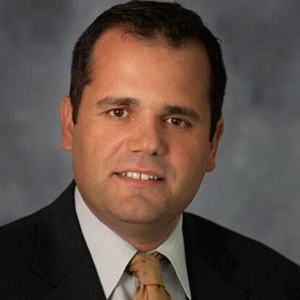THANK YOU FOR SUBSCRIBING

The Biotech CIO Roadmap in a Sea of Change
Amit Shah, VP of IT- Enterprise Applications & Systems, Excelitas Technologies


Amit Shah, VP of IT- Enterprise Applications & Systems, Excelitas Technologies
Anyone with their finger on the pulse of the biotechnology industry today will tell you that Biotech is going through a virtual tsunami of change through mergers and acquisitions that are shaking the very foundation of some of the biggest companies and institutions in the field. When you consider that in 2014 alone there has been Biotech M&A deals in excess of $100 billion, it’s clear that we have reached a true watershed moment for the industry. As Biotech is rapidly evolving, and so the role, responsibility and the intrinsic value of the Biotech CIO.
The biotech CIO is increasingly being called upon to “come out from the back room of IT” and help guide companies through periods of transition. As such, biotech CIOs today sit at the intersection of the company’s C-suite leadership, the legacy systems of old and the disruptive technologies of the present and future including big data, cloud, social, mobility and artificial intelligence. Bringing all of these elements into harmony and efficiency can make the difference between a successful biotech M&A and enterprise-wide dysfunction.
But despite the challenges posed by the M&A transaction process and the post-transaction integration, there is a path forward. As an IT VP for a global technology leader with deep roots in the Biotech , I’ve seen successes and failures in M&A’s and would like to offer my thoughts on what I call the Biotech CIO Roadmap for M&A Success.
As with many long journeys, the best place to start is by asking the right questions at the outset.
- What are the main business objectives for the merger or acquisition?
- How can IT integration be leveraged as an opportunity to help reach those objectives and position the company for growth?
- How can synergy between systems and cultures be established short term and long term?
- What kind of tailored approach to IT integration is needed to obtain that synergy?
- What are the key personnel gaps that stand in the way and how can they be addressed?
The answers to these important questions will help chart the course, but before proceeding with full culture and system integration during a merger or acquisition, a healthy amount of due diligence is also required. This early stage requires a strong focus on the risks associated with synergy and the uncertainties and variables that prove inevitable with every merger or acquisition. The bottom line is that IT due diligence should result in a broader understanding of the risk profile for IT integration, a clear migration plan and a definitive synergy timeline.
“Every IT staff, post-merger or acquisition, will have its own unique strengths and weaknesses. The role of the CIO is to evaluate the team and reorganize throughout phase one and two as needed to optimize talent”
Moving forward, the process of
Phase One encompasses the first 90 to 180 days of the post-merger or acquisition. The key guiding principles that I believe can lead to successful progress during this crucial time include the following.
People First, Process Second. Listen – really listen - to all key stakeholders involved in the process and establish an environment of true collaboration. Learn the history behind key decisions that others have made in the past with relation to biotech IT processes before making changes to the status quo. Interface regularly with other parts of the organization such as HR and finance to ensure change management is well organized. And always remember, you are not just merging companies, but cultures and every company or institution culture has positive contributions to make.
Avoid Disruptions to Business Operations. No matter what, a successful merger or acquisition process is one that does not hinder the business itself, so it is critical to avoid distractions to business activities and not change the behavior of transaction processing systems such as ERP and SCM etc.
Infusion. Inside and Out. In addition to key infrastructure integrations that are essential such as WAN, email systems and financial reporting systems, it’s also crucial to present a unified face to the outside world including both vendor management but also with regard to the brand identity itself of the new company including the website and all public facing brand assets and marketing materials.
In Phase Two it now falls upon the biotech CIO to look across the enterprise over the next one to two years post-merger or acquisition with a wide angle lens to evaluate and re-evaluate all aspects of the IT integration and applications used by all various lines of businesses, functional organizations and corporate at-large and to advise the C-level on where improvements can be made. I like to put these evaluations into a series of categories.
Consolidation. Which systems and applications from one company – such as EPM or ERP - can be converted to the other company system to improve operational efficiency?
Amalgamation. What systems and applications can be combined to form a “new” unit to operate the combined entity?
Preservation. Which systems and applications are so essentially unique to a business unit’s capabilities and culture that they need to be maintained Retirement. Where are the redundancies and what systems are no longer necessary to drive enterprise efficiency?
Throughout both of these critical phases, it is incumbent upon the biotech CIO to keep a laser-like focus on what I call “The Three Ps” – People, Process and Projects.
Every IT staff, post-merger or acquisition, will have its own unique strengths and weaknesses. The role of the CIO is to evaluate the team and reorganize throughout phase one and two as needed to optimize talent. These can be times of great internal tension and stress, so as reorganization evolves, it is incumbent upon the CIO to communicate effectively about every change and emphasize not only the “what,” but the “why.”
Key processes such as project management, spending approvals and company trainings among others must be harmonized – again taking the best from both of the companies or institutions.
Finally, it is critical that key company personnel become invested in each phase of the process. Designate project managers to coordinate various elements of the integration within IT and from a broader enterprise perspective as well. It’s also important to emphasize the need for speed in execution because the longer the merger or acquisition integration takes, the higher the risk for the company in meeting synergy goals.
As we all know, the only constant is change and today this has never been truer than for the biotechnology industry. But with change comes opportunity. The enhanced role of the CIO within the enterprise – and the higher level of influence it provides – gives biotech CIO’s a unique opportunity to help their companies navigate this sea of change and sail on to future success.
Check Out : TOP BIOTECH STARTUPS IN APACWeekly Brief
I agree We use cookies on this website to enhance your user experience. By clicking any link on this page you are giving your consent for us to set cookies. More info
Read Also
Navigating Compliance Challenges in ESG AML and Digital Onboarding
A Vision for the Future: Automation, Robotics, and the Smart Factory
The Rise of Hyper Automation
Transforming Business Operations with Robotic Process Automation
Combining Automation with AI to Achieve Human-Like Interaction
Implementing RPA - 5 Ultimate Prerequisite
Incorporating the power of recognition into our vendors' sustainability journey
Elevating Guest Experience with Data




















